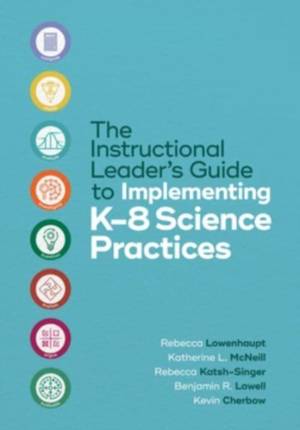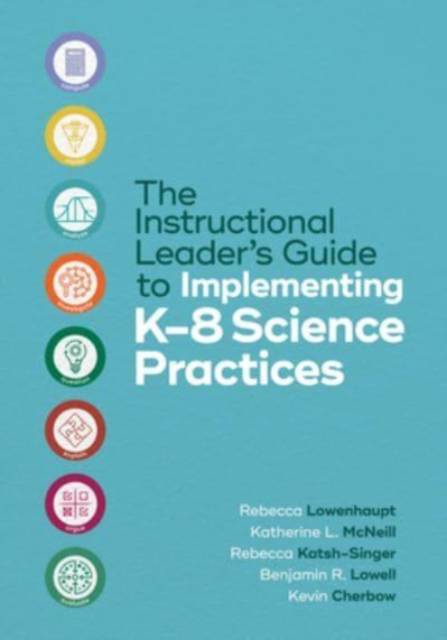
- Retrait gratuit dans votre magasin Club
- 7.000.000 titres dans notre catalogue
- Payer en toute sécurité
- Toujours un magasin près de chez vous
- Retrait gratuit dans votre magasin Club
- 7.000.000 titres dans notre catalogue
- Payer en toute sécurité
- Toujours un magasin près de chez vous
The Instructional Leader's Guide to Implementing K-8 Science Practices
Rebecca Lowenhaupt, Katherine L McNeill, Rebecca Katsh-Singer, Benjamin R Lowell, Kevin CherbowDescription
An accessible, engaging primer on the eight science practices at the heart of the Next Generation Science Standards (NGSS), providing K-8 instructional leaders with the grounding they need to ensure excellent science instruction in every classroom.
The NGSS reconceptualize science instruction by redefining the teacher as someone who helps students construct their own knowledge by thinking like scientists and engaging in discrete science practices.
However, with STEM teachers in short supply and generalists often feeling underprepared to teach elementary and middle school science, what can instructional leaders do to ensure students get a strong start in this critical area and learn to love science?
Although a content-neutral approach to supervision--one that emphasizes general pedagogical features such as student engagement, cognitive load, or classroom management--is undoubtedly beneficial, the best instructional leaders know that content-specific approaches are necessary to achieve real excellence.
We therefore need to go deeper if we want to engage both teachers and students with the science practices. We need science-specific supervision. With that in mind, the authors provide vignettes and examples of the science practices in use, advice on observing science classrooms, concrete look-fors, and guidance on fostering ongoing teacher learning. They also offer a rich compendium of research- and evidence-based resources, including sample lessons, FAQs, and more than a dozen downloadable tools to facilitate classroom observation, feedback sessions, and professional development.
This is an essential guide for any K-8 instructional leader who wants to empower all teachers to provide all students with rich science experiences and develop the cognitive and noncognitive skills students will need to thrive in more advanced courses, work, and society.
Spécifications
Parties prenantes
- Auteur(s) :
- Editeur:
Contenu
- Nombre de pages :
- 150
- Langue:
- Anglais
Caractéristiques
- EAN:
- 9781416630548
- Date de parution :
- 25-10-21
- Format:
- Livre broché
- Format numérique:
- Trade paperback (VS)
- Dimensions :
- 173 mm x 251 mm
- Poids :
- 276 g







